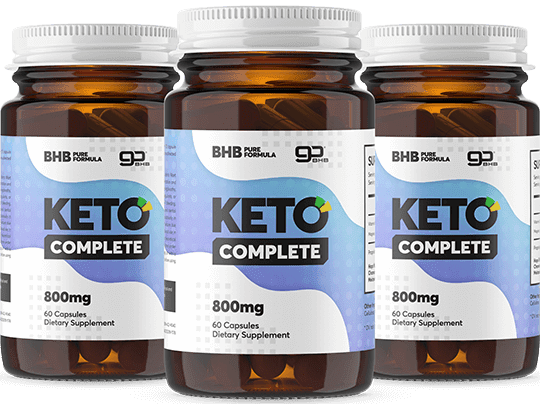High Glycemic Keto Diets Linked to Keto Now and Mortality
This Photo by Unknown Author is licensed under https://www.tctmd.com/
Most effective weight loss pills: Optimum Keto Boost review, Optimum Keto boost, Keto X3, Keto X3 Review
- Keto Now diet high in items that generate rapid blood glucose spikes has been linked to poor results in a variety of geographic regions.
- Keto strive compared to people who eat foods with a lower glycemic index, such as green vegetables, beans and legumes, and whole grains, people who eat a diet rich in high-glycemic foods, such as white bread, potatoes, and sugary soft drinks, have a higher risk of cardiovascular events or death from any cause. The information comes from a review of the PURE trial.
- Investigators found a link between the glycemic index and null Keto Now cardiovascular outcomes and all-cause mortality in patients with and without prior cardiovascular illness, with the link being strongest in those who were overweight or obese.
- Keto Now research, lead by David Jenkins, MD, PhD (University of Toronto, Canada), reaffirms nutritional advice that has been offered for years: eat high-quality carbs. He told TCTMD, "I hope this research gives folks some rationale behind the counsel we have been delivering for a long time." "Eat your fruits and vegetables, as well as whole grains, legumes, beans, lentils, and other similar things, and enjoy them." This study demonstrates why certain foods are beneficial to your health."
- The PURE study's methodology has been attacked in the past, including by Andrew Freeman, MD (National Jewish Health, Denver, CO), who co-chairs the American College of Cardiology's Nutrition and Lifestyle working committee. Because food-frequency questionnaires Keto Now are based on recall, they can give an erroneous picture of dietary trends. Such questionnaires, for example, are notorious for underreporting food intake, particularly dietary fat, making it difficult to draw broad conclusions regarding the relationship between certain foods, food groups, or nutrients and clinical outcomes.
- Despite these constraints, Freeman told TCTMD that "in this particular example, the fundamental premise that those who eat a higher glycemic diet fare worse makes reasonable based on all the known public data." High-glycemic foods are often highly processed, and they are known to raise the risk of negative cardiovascular effects dramatically.
Read More About >>>Best Excersice to increase stamina.
Carbs Are Beneficial, Carbs Are Harmful
- A PURE investigation from a few years ago revealed that a high carbohydrate diet was linked to a significantly higher risk of death. When compared to diets with lower carbohydrate intake, diets with the greatest carbohydrates—on average, 77 percent of daily calories—were linked to a 28 percent higher risk of death. According to Jenkins, the study resulted in headlines claiming "carbohydrates kill" and encouraged the popularity of low-carbohydrate diets. However, subsequent PURE analysis revealed that eating fruits, vegetables, legumes, and other nutritious carbs helped to prevent cardiovascular disease.
- According to Jenkins, those two investigations led to the conclusion that the divergent carbohydrate data were part of a "glycemic-index tale." As a result, Jenkins approached the PURE research group to conduct a study on dietary patterns' glycemic index and glycemic load. PURE is a significant global study, he said, because it involves a diverse patient population from five continents.
- This latest study, which was published today in the New England Journal of Medicine, included 137,851 people aged 35 to 70 from 20 different cultural and socioeconomic backgrounds. During follow-up, data on patient demographics, lifestyle, health history, and medication use was collected using standardized questionnaires, while data on major cardiovascular events and all-cause mortality was collected using case-report forms. Food intake was measured using different questionnaires tailored to each country, with nine different questionnaires tailored to different regions of India.
- China, Africa, and Southeast Asia were the most likely to consume diets and foods with a high glycemic index, which is a measure of how quickly food is digested and released as glucose into the bloodstream. South Asia had the highest glycemic load, which considers the amount of carbohydrate in a serving of food, followed by Africa and China. All study participants had a mean glycemic index of 82.6 and a mean glycemic load of 280.8 grams per day.
- In the overall population, there was no statistically significant difference in the risk of the primary endpoint between those with the highest (468 g/day) and lowest (136 g/day) glycemic loads. People with preexisting cardiovascular disease, on the other hand, who were in the highest quintile of glycemic load had a 34% higher risk of the primary endpoint and a 31% higher risk of major cardiovascular events than those in the lowest quintile.
This Photo by Unknown Author is licensed under https://www.tctmd.com/
Overweight Patients Should Avoid High Glycemic Diets
Investigators discovered a 38 percent greater risk of the primary outcome among overweight/obese patients who had the highest glycemic index compared to those who had the lowest. When compared to the lowest quintile, there was an elevated risk of the primary outcome even among overweight participants with relatively higher glycemic indices. The link between glycemic index and clinical outcomes was substantially less in those with a BMI of less than 25 kg/m2.





Comments
Post a Comment